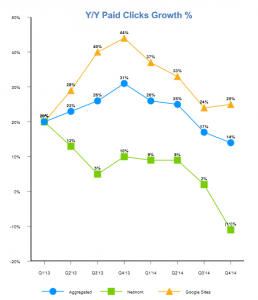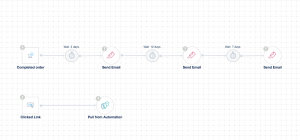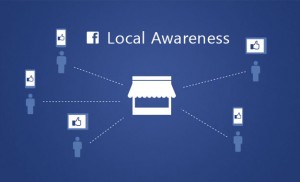Online Competitors vs. Business Competitors in SEO Keyword Research

Understanding these differences can give you a leg up in planning your SEO and marketing strategies more effectively.
Understanding Competitors in SEO
For a thorough SEO strategy, you need to know who you’re up against. This is where understanding your competitors comes into play.
Competitors in SEO can be split into two main categories: online and offline. Online competitors are the ones you compete with for visibility on search engine results pages (SERPs). These are businesses or websites that target the same keywords and audience as you do in the digital space. Then, we have offline competitors, which are traditional businesses that might compete with you in the real world, but not necessarily online. They sell the same products or offer similar services but may or may not be successfully competing for the same keywords and rankings.
Knowing the difference is key. For instance, your local coffee shop might be a hit in the neighborhood, making it a significant offline competitor. However, if they don’t have a strong online presence, they won’t be a competitor in the SEO sense. On the flip side, you might find an online coffee supplier dominating the search results for your best keywords, even if they don’t have a physical presence in your area. They’re your online competitors, fighting for the same digital space as you.
The Landscape of Offline Competitors
Offline competitors are often assessed through traditional factors like location, price, customer service, and product variety. For a brick-and-mortar store, the competition might be the shop next door. For service providers, it could be other local businesses in the same industry. These competitors impact your business in tangible ways, from the foot traffic in your store to the prices you set.
However, a key point to remember is that strong offline competition doesn’t always translate to the online world. A business might dominate the local market because of its prime location or stellar reputation, yet have minimal online presence.
The Dynamics of Online Competitors
Online competitors are those businesses or websites you’re vying against in the digital landscape, particularly in search engine results.
Online competition is assessed through different lenses compared to offline. It’s all about keywords, backlinks, content quality, user experience, and online reputation. These factors determine not just visibility but also credibility and authority in the digital space. For example, two bakeries might compete for the top spot in search results for “best chocolate cake near me,” even though one might not have a physical storefront. This competition is less about the tangibles of product and place, and more about who can better optimize their online content to meet the needs and searches of the target audience.
The dynamics of online competition introduce a few unique challenges and opportunities. Firstly, the competition is not limited by geography. A small, local business isn’t just competing with its neighboring businesses but potentially with national or international companies targeting the same online keywords. This broadens the competitive field significantly but also opens up a vast audience that was previously unreachable through traditional offline means.
Online visibility can change quickly. A competitor’s revamped website, a new SEO strategy, or changes in Google’s algorithm can shift the rankings in a matter of weeks or months. This fluidity requires businesses to be agile, constantly optimizing their SEO practices to stay ahead in the game.
Understanding your online competitors involves more than just knowing who they are; it’s about analyzing their strategies, strengths, and weaknesses. Tools like Google Analytics, SEMrush, or Ahrefs can provide insights into competitors’ keyword strategies, backlink profiles, and content marketing efforts. This intelligence is invaluable for crafting your own strategies to outperform them in search rankings.
Key Differences Between Online and Offline Competitors
Grasping the key differences between online and offline competitors is crucial for crafting a comprehensive business strategy that thrives in both realms. While offline competition hinges on tangible, physical factors, online competition is rooted in visibility, content, and digital presence. Here’s a breakdown of the primary distinctions:
Geography and Accessibility
-
Offline: Geography plays a significant role. Competitors are often those in the same locality or region. The battle is over foot traffic, local brand recognition, and physical accessibility.
-
Online: There are no geographical boundaries. Competitors can be from anywhere in the world, making the market much larger and more diverse. The focus is on digital footprints, search engine rankings, and online visibility.
Metrics for Success
-
Offline: Success is measured through sales, foot traffic, local market share, and customer loyalty within a specific area. These metrics are tangible and directly related to the physical presence of a business.
-
Online: Success is gauged by website traffic, search engine rankings, click-through rates, online sales, and social media engagement. These metrics reflect the effectiveness of a business’s digital marketing strategies.
Competitive Strategies
-
Offline: Strategies may include location selection, in-store promotions, local advertising, community involvement, and customer service. The focus is on creating a compelling physical experience for customers.
-
Online: Strategies revolve around SEO, content marketing, online advertising, social media presence, and user experience on websites or apps. The aim is to attract, engage, and convert online users.
Customer Interaction
-
Offline: Customer interaction is personal and direct, offering immediate feedback and fostering relationships through face-to-face service.
-
Online: Interaction is digital, through websites, social media, and email. While it can reach a broader audience, it requires different techniques to engage and build trust without the benefit of personal contact.
Change and Adaptation
-
Offline: Changes to business models or strategies can be slow and costly, given the physical components involved (e.g., relocating, renovating, restocking).
-
Online: The online landscape is more dynamic, allowing for quicker changes to websites, marketing campaigns, and strategies based on analytics and trends.
Understanding the Audience
-
Offline: Understanding the audience often relies on direct interactions, local market research, and traditional feedback mechanisms.
-
Online: Digital tools and analytics provide real-time insights into audience behavior, preferences, and feedback, allowing for more targeted and effective strategies.
Analyzing the Competition: Tools and Techniques
Online Competitor Analysis
For online competition, the focus is on understanding how your competitors are performing in search engines, what keywords they’re ranking for, the quality of their content, and their overall online presence. Here are some tools and techniques to help you do just that:
-
SEO Tools: Tools like , , and are indispensable for analyzing competitors’ online strategies. They can help you see which keywords your competitors are ranking for, the quality and quantity of their backlinks, and even the structure of their paid advertising campaigns.
-
Content Analysis: Analyzing your competitors’ content can give you insights into what topics are resonating with your shared audience. Tools like can show you which pieces of your competitors’ content are getting the most engagement.
-
Social Media Listening: Tools like or allow you to monitor mentions of your competitors across social media platforms. This can give you insights into their promotional strategies and audience engagement.
Focusing on Online Competitors for Keyword Research
When it comes to keyword research, the spotlight shifts exclusively to your online competitors. This is a strategic move, even if these competitors aren’t the ones you’re up against in the traditional business sense.
Keyword research is the foundation of SEO. It’s all about understanding the words and phrases that potential customers use when searching for products or services like yours. The goal is to optimize your online content with these keywords, so your website ranks higher in search engine results, driving more traffic and, ultimately, conversions.
Here’s the twist: the competitors who matter most in keyword research are not necessarily the ones you compete with offline. They are the websites and businesses that occupy the top spots in search engine results for your target keywords. These websites might not even be direct competitors in the conventional sense. They could be informational websites, blogs, directories, or e-commerce platforms that share an audience similar to yours.
Why Focus on Online Competitors for Keywords?
-
Search Visibility: The primary goal of keyword research is to enhance your visibility in search engines. Your online competitors are already doing something right to rank for your target keywords. Analyzing their content can reveal gaps in your strategy and opportunities for improvement.
-
Audience Insights: Online competitors who rank well for your target keywords are effectively capturing the attention of your potential customers. By understanding the keywords they use, you can gain insights into the needs and preferences of your audience.
-
Content Strategy Development: Keyword research influenced by online competitors can guide your content creation. It helps you identify topics that resonate with your target audience, allowing you to produce content that is both relevant and competitive.
-
SEO Optimization: Beyond just finding the right keywords, analyzing your online competitors helps you understand how to structure your content, optimize your meta tags, and improve your website’s overall SEO health.
How to Conduct Competitor-Based Keyword Research
-
Identify Your Competitors: Start with a simple search of your main products or services and see which websites rank highly. These are your key online competitors for keyword research purposes.
-
Use Keyword Research Tools: Tools like SEMrush, and Ahrefs can help you analyze your competitors’ keywords. Look for high-volume, relevant keywords that your competitors are ranking for but your site is not.
-
Analyze Their Content: Pay attention to how your competitors use these keywords in their content. What topics do they cover? How do they structure their articles? This can inspire your content strategy.
-
Look for Keyword Gaps: Identify keywords that your competitors haven’t fully exploited. These represent opportunities for you to create content that fills these gaps, potentially capturing traffic they’ve overlooked.
SEP uses both in-house, proprietary analysis tools as well as third-party services to deliver thorough keyword research with data-driven content recommendations.
The post Online Competitors vs. Business Competitors in SEO Keyword Research appeared first on Search Engine People Blog.
About the Author: Ruud Hein
(8)








